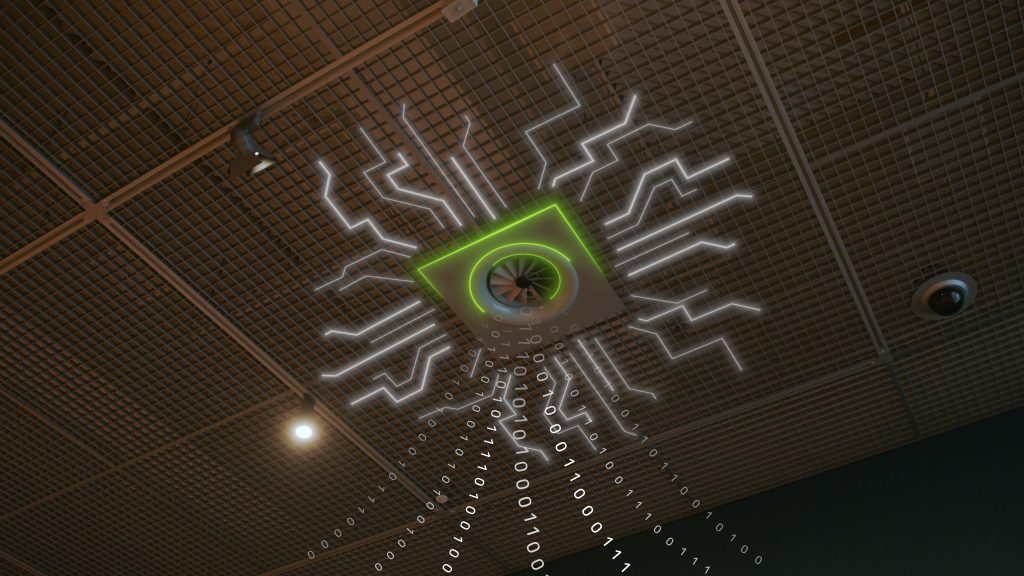Barry is blogging: Mining the data gold mine with digital twin
Buildings are a goldmine of data. We can already put these data to myriad uses, but the real breakthrough has yet to come. Barry Tuip, manager at Strukton PULSE,
on the near future:
“With “digital twins”, we are developing a central platform in which all data are aggregated and made available together, with unprecedented benefits for building owners, users and suppliers.
While I was studying installation technology, the innovations I studied were mainly theoretical, such as building simulation, predictive modeling and machine learning. Now, about 10 to 15 years down the road, I am manager at SPIE Netherlands’s Pulse Core department (formerly Strukton Worksphere), and can see how the theoretical developments I learned about back then are actually making their way into building management. What were still highly academic topics at the time have now become feasible technologies with sound businesses cases and great added value.
In this digital advance, “data” play a leading role. For decades, SPIE Netherlands has been collecting static data about a great variety of buildings and systems, gathering information about usage, malfunctions, lifespan, maintenance costs and more. Thanks to sensor technology and the Internet of Things, we have been able to add a growing stream of real-time data in recent years, which is why we developed the PULSE Core platform to monitor temperature, air quality, energy consumption and space utilisation. What’s more, we use smart algorithms to continually check whether buildings and systems are performing optimally. All those aggregated data are a veritable goldmine for us an our clients, because a building equipped with state-of-the-art technology and optimal performance levels will only increase the value of their real estate.

Even more data sources
The picture only becomes more complete when we add 3D information. New buildings are designed and built via BIM, using a detailed 3D model of the entire property. Interestingly, these models also come in very handy during the operational phase, e.g. for simulations (how will the building respond to a heat wave?) renovations and expansions. Moreover, BIM models are constantly enriched with new information themselves.
Met deze drie databronnen (asset data, sensordata en BIM) komen we al heel ver. but I should also mention the growing role played by building users, who are becoming increasingly connected to buildings. Through apps, they can adjust comfort settings to their preferences, book workstations and services and voice their opinions, providing a wealth of information in the process. With this information, buildings can be used more efficiently, laid out more intelligently and made as healthy and comfortable as possible.

Getting a grip on data and buildings
Buildings are generating more and more data. Building owners know this, and they also know that data is “the new gold”. As a result, they are faced with a pressing question: how can I safely aggregate all those data and make them available to other parties, while staying in control?
We are now developing the answer to that question ourselves with our Australian software partner Willow. Together, we are working on a powerful platform that makes it possible to link all kinds of data sources in line with the latest security standards, to combine and analyse the underlying data, and to make those data available and exchangeable. With such a platform, we will be able to create a digital twin that will unlock capabilities that we could only dream of until now.
Taking everything to the next level
A digital twin is a digital copy of a building that incorporates all possible static and real-time information about the building This gives building owners a so-called single source of truth, a centralised data ecosystem for the building’s entire lifespan. Third parties can (partially) access it to retrieve and add information, such as caterers, cleaners, security and technical suppliers, as well as users themselves. With an app, they can easily book rooms or even lunches and set their own comfort preferences.
Digital twins can also have a significant impact on building management and maintenance, and we are currently developing a control room that will enable us to leverage all this information to control buildings more effectively. In addition, techniques such as augmented and virtual reality are making our work more efficient, precise and safe. We can prevent failures and failure costs by running simulations of of planned modifications in advance and we never stop improving building performance, e.g. through predictive maintenance and automatic interventions. In a nutshell, digital twins will allow all stakeholders to take their services to the next level.
The new global standard
Digital twins are a real-world amalgam of innovations that were only theoretically possible when I was a student, which is why I am personally thrilled to see the progress being made by Strukton Worksphere. We are an ambitious bunch: with the WillowTwin, our goal is to become the global standard for building management and strategic asset management. Rather than reinventing the wheel for every new building, there will be one universal solution to start making the most of the goldmine of data at our fingertips.
This gives building owners a so-called single source of truth, a centralised data ecosystem for the building’s entire lifespan.
Share Message
See also

PULSE Core gives Nimeto students insight into sensor technology
PULSE Core is part of the teaching material of MBO vocational school Nimeto in Utrecht. There are 10 sensors in various rooms in the school

Healthy Work Environment? Achieve this goal together with PULSE Core!
In the modern business world, creating a healthy work environment plays an important role in promoting both employee productivity and overall well-being. Facility managers and
